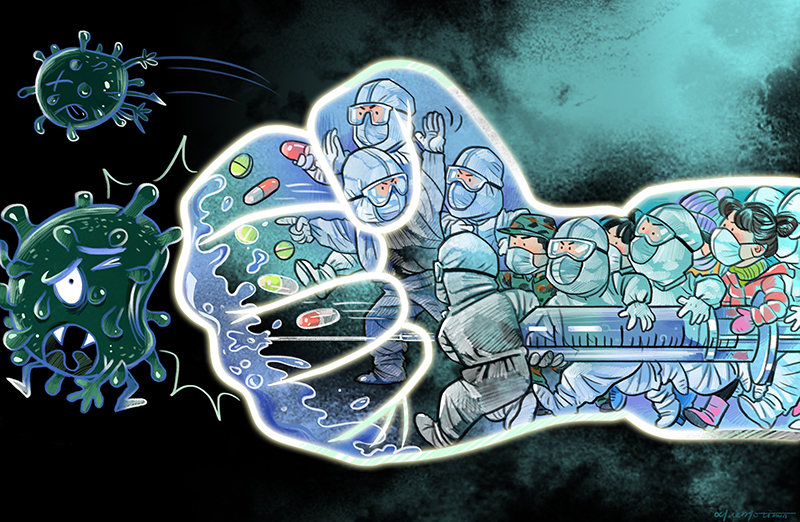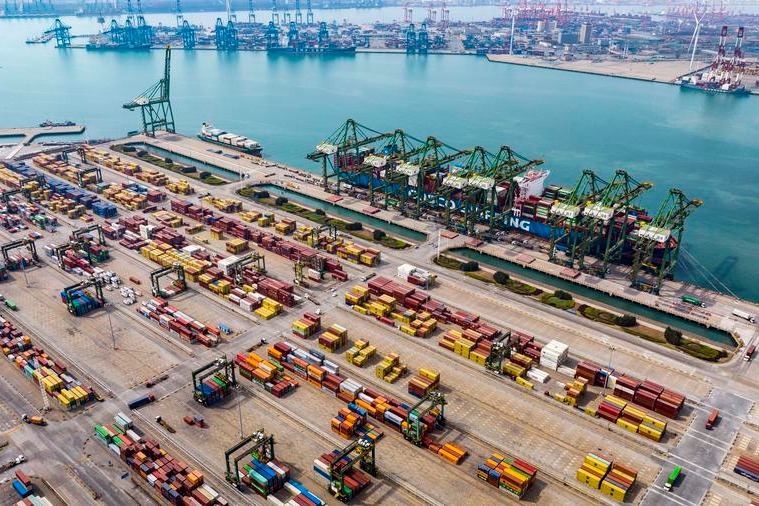Epidemic puts governance capabilities to test


A big country such as China in particular needs to hone its national governance capabilities. Which explains why the Third Plenary Session of the 18th Communist Party of China Central Committee in 2013 proposed the improvement of the national governance system as the arch goal of comprehensive deepening reform. And why the Fourth Plenary Session of the 19th CPC Central Committee laid emphasis on improving national governance capabilities by leveraging China's institutional advantages.
In practice transforming scientific institutional design into effective governance is rather complex. Formulation of the strategy or plan is only a starting point that in its implementation will require calibration and adjustment.
Confronting a challenge like the outbreak of the new coronavirus, local governments' governance capabilities have been severely tested. The results returned offer both lessons and sound experience.
To begin with, such major decisions as travel restrictions made to contain the spread of the pandemic are scientific and effective. The suspension of public transport and automobiles in the central districts of Wuhan, the epicenter of the outbreak, although a hard decision to make, as it has had a great impact on residents' lives, has been a significant move to cut-off of transmission of the virus.
Besides, the mobilization of medical staff and resources from other provinces and cities to Wuhan to help it in its struggle with the epidemic has given full play to China's institutional advantage of "mobilizing necessary resources for big undertakings".
Albeit the Wuhan government's handling of this public health crisis has exposed multiple problems, such as low work efficiency, outdated management ideas and ignorance of social psychology. But the poor management of the epidemic in its early stages, which led to it becoming a national pandemic was more a product of the imperfect emergency response system than the administrators' personal decision-making.
In light of all this, the public health crisis has offered us the following food for thought.
First of all, a quick, top-down and well-connected emergency response system with a modern and professional emergency relief team at all levels has to be first established and then improved. It is imperative that new technologies including big data and the internet of things be employed, experts and think-tanks participate and local administrations' management philosophy is modernized.
Second, there should be timely and comprehensive disclosure of information to effectively manage public sentiment. The crisis response chain must be quicker in releasing relevant information and data. The delay in doing so at the beginning of the current crisis only worsened the whole situation and caused public panic.
Ideally, information should be released in an open and constructive way to reassure the public, solicit their cooperation and improve the credibility of the government's response. This would then create a favorable environment for the guiding of public opinion. Thus effective channels for releasing information need to be established by developing interactions with different media outlets and social media platforms. This is an important part of modern governance.
Third, the measures adopted should be systematic and holistic. The principles of law-based governance, comprehensive governance and governance at the source should be adhered to when making major decisions, as required by the Fourth Plenary Session. In the case of Wuhan, some necessary measures have been criticized by the public or led to a public outcry due to less than desirable implementation of supplementary measures or insufficient policy explanation. Therefore, the government had better take all social factors into consideration when making decisions on the one hand and make them easy to be comprehended by the public on the other.
Fourth, attention should be paid to details in modern social governance. Because in a complicated society like China, if you pull one hair, the whole body is affected. Both macro policies and details on the micro level should be taken to heart. In the fight against the current pandemic, certain local officials in Wuhan cannot even give the exact number of the breathing masks their jurisdiction produces and wear the masks in a right way. Although understandable given the huge pressure and responsibility involved, such things could and should be avoided.
The author is a professor at the Department of Literature and History at the Party School of Communist Party of China Central Committee. The views don't necessarily represent those of China Daily.


































